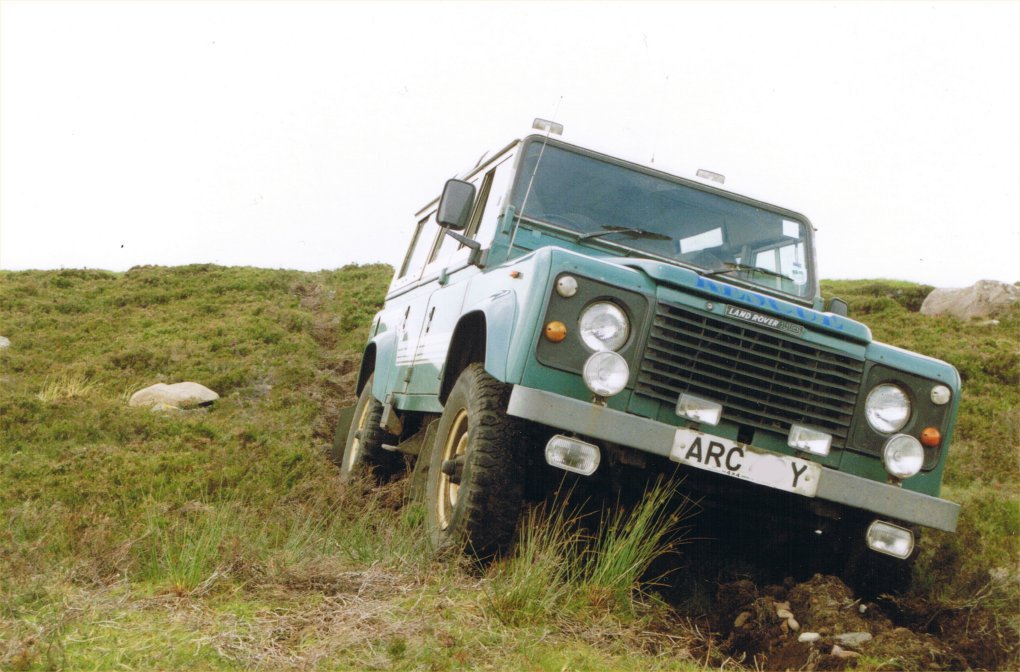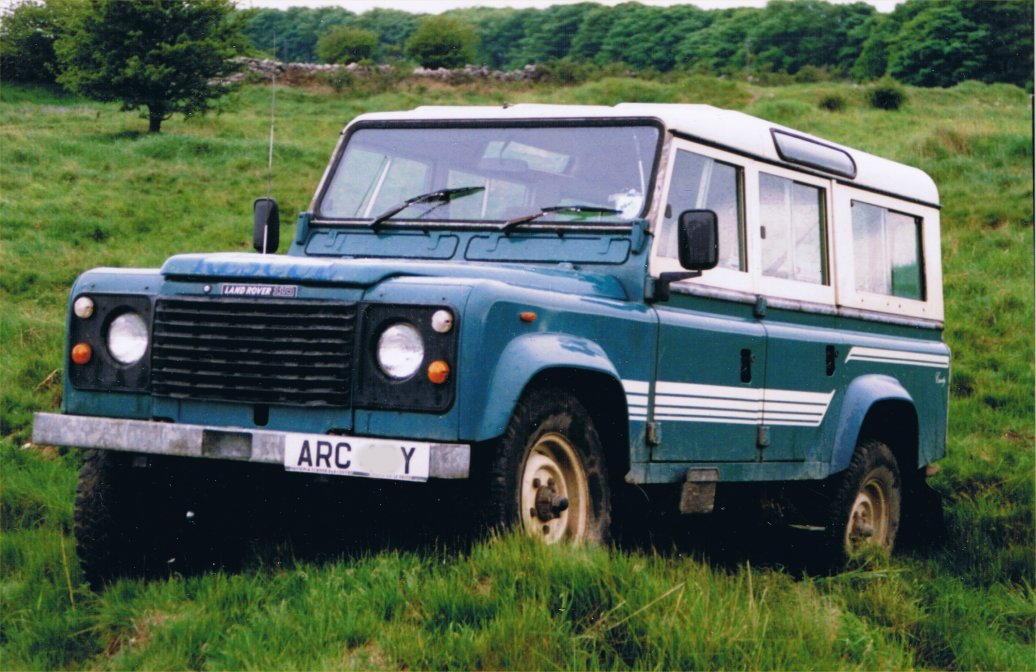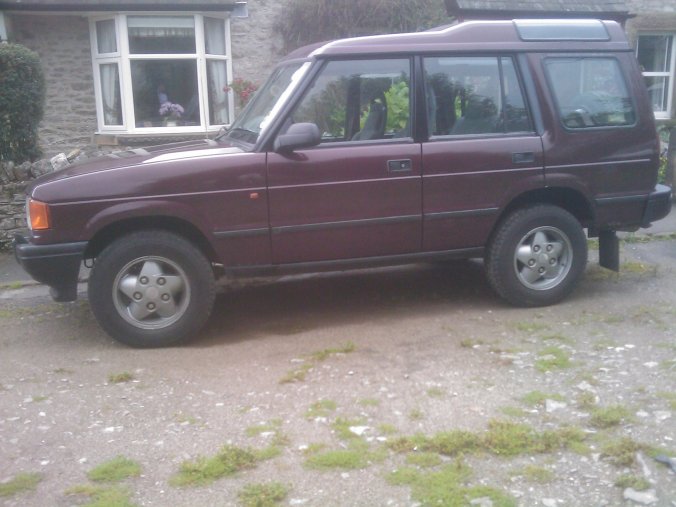<<Back to previous page
Land Rover History
I have, for many years, been lucky enough to own a range of Land Rover vehicles.
On this page you will find a few pictures of them, ordered by type and age.
For each type I have included a short potted history. Any errors or omissions are entirely my fault, and I would welcome your corrections.
Series I
Although unfortunately I have never owned a Series I Land Rover, I felt I could not have a page based on Land Rovers without mention of the original. They were the very first model to be produced, starting in 1948.
Originally only available as a short (80inch) wheelbase, they were a very basic design of flat sheets of aluminium, and door-tops, body sides and roof were all optional extras.
In 1954 the chassis and body were lengthened to provide slightly more load space - 86" for the short wheelbase and 107 for the recently introduced long wheelbase.
I don't have any pictures of my own of a Series I, so here are links to Wikipedia's images:
Series II and IIa
In 1958, the Land Rover range was re-modelled, with a certain amount of styling being added. The most obvious consequence of this was the rounded edge added to the bodywork at the top of the wing line, which has remained the same to this day. This allowed the body to be slightly wider (66" as opposed to the 61" of the Series I) which accommodated the increased track of the axles.
Series II Land Rovers also had a number of refinements mechanically, with better engines, improved seating, and a gearbox with synchromesh in the top two gears.
The chassis length was increased to 88" for the short wheelbase and 109" for the long wheelbase, the extra length being between the front axle and the bulkhead to allow for the new, physically larger engines.
The Series IIa or 2a, was a late variation on the Series II Land Rover (now there's a surprise) introduced in 1961, and
saw the introduction of the diesel version of the 2.25 petrol engine, and slight changes to styling inside and out. Also
the headlights were moved from the front grille to the wings.
My first Land Rover was a bit of a hybrid - it had the mechanical bits of a Series IIa (the gearbox without synchro, and the earlier transfer box and axles) but internally it had the Series III dashboard layout, and externally it had the Series III styling changes, apart from the side skirts under the doors, which were the older, deeper version from the Series IIa.
Series III
The Series III was introduced in 1971, and stayed more or less the same for the next 12 years. The most obvious changes were at the front, with a new plastic grille and different headlight surrounds, and the bonnet panel, which up to now had been a curved flat sheet of aluminium, became a more solid detailed pressing with curved edges. Also the skirts under the doors were slightly shallower - why this was done, nobody knows.
Inside there was a much improved dashboard layout, a much better heater, and optional "deluxe" seating which almost felt comfortable - certainly in contrast to the flat slabs which were the original seating.
Mechanically there was a new all-synchromesh gearbox ("all" not including reverse, of course), a new transfer box, and uprated axles and differentials.
My second Land Rover was a late model Series III produced in 1982.
As you can see, visually it looks little different to the one above, which is 11 years older.
However, this is a genuine "County" spec - which means it had factory fitted carpets, rear windows and rear seats, and even a full headlining. It had a 2.25 petrol engine, and was a very nice vehicle indeed.
90 and 110 (or Ninety and One Ten)
My next vehicle was even nicer, however.
In 1983, the Land Rover range was given a complete overhaul, and though at first glance they looked similar to the Series III, the 110 (1983) and 90 (1984) were effectively new vehicles.
Built on brand new, coil-sprung chassis, the 90 and 110 were very much different to their leaf-sprung predecessors. The 90 and 110 names were derived from the length of new wheelbase for the short and long wheelbase vehicles respectively.
I can remember the howls of anguish from staunch Land Rover supporters when these vehicles were first introduced, but in fact, due to their coil springs, they turned out to be better off-road, and more comfortable on-road, than the Series Land Rovers they replaced. (ooh, contentious!)
The most obvious changes to the new vehicles were: the new taller, one-piece windscreen, the flared wheelarches over the wheels to accomodate new wider axles, and the redesigned front grille becoming flush with the front of the wings to give a larger engine bay. This last was first introduced on the Stage One V8 in order to fit the V8 engine into the front of the vehicle.
My next Land Rover was a very early (1983) 110 County Station Wagon - one of the first ever built.
 |  |
This was the first long wheelbase Land Rover I had owned, and was amazingly comfortable to drive. Short wheelbase Land Rovers, either coil or leaf sprung, tend to have quite a "choppy" ride, but this 110 was lovely and smooth. We drove it all over Britain, right up to the far north of Scotland, and down to the south coast, and it was a lovely relaxed drive on motorways or A and B roads. It still had the same 2.25 Petrol engine that the Series III had, but the introduction of a five speed gearbox made a big difference to its cruising speed and economy.
In 1984 the short wheelbase 90 was introduced, bringing with it, for the first time, wind-up windows in the doors: all previous models (including the early 110) had sliding windows, and as an option, the V8 petrol engine from the Range Rover became available in the short wheelbase. It had previously been offered in the long wheelbase "Stage One" leaf sprung vehicle which was introduced in 1979. The V8 became a firm favourite amongst Land Rover owners, and still is, although due to changes in taxation, and the cost of fuel, it is not as popular now as it once was. In 1985, The two four-cylinder engines (Petrol and Diesel) were upgraded to 2.5L from 2.25L and in 1986 a Turbo Diesel was introduced, which was the same block as the normally aspirated version, but with a turbo added.
Defender
In 1989, Land Rover introduced the Discovery to the model line-up, and the 90 and 110 became known as the Defender, to distinguish them from the Discovery. The Discovery had a new direct injection turbo diesel - still using the same block as the old 2.5L unit, but massively re-engineered with new alloy head, new crank etc. This was known as the 200Tdi engine, and it soon became available in the Defender model range.
The 2.5 Petrol engine was dropped from the Defender range in 1994, with the introduction of the 300Tdi diesel engine. Unlike previous offerings, this was a brand new designed engine, and was so good in terms of speed and economy that the 2.5 Petrol was no longer worth offering as an option. (It was, after all, essentially the same engine that was introduced in 1958).
My next Land Rover was a 1997 Defender 90 (or Ninety) with the 300Tdi engine.
In 1998 the Defender was fitted with an all-new 2.5 litre, five-cylinder turbo diesel engine, badged the Td5. The 300Tdi could not meet upcoming Euro III emissions regulations so the Td5 replaced the 300Tdi as the only available power unit, and then in 2007 Land Rover (now owned by Ford) replaced the TD5 with a Ford 2.4 litre four-cylinder unit as used in the Transit range of vans.
Discovery
Introduced in 1989, the Discovery was aimed to fit into the market between the utilitarian Defender, and the up-market Range Rover. It was Land Rover's attempt to compete with the increasing number of Japanese leisure 4 x 4 vehicles. The Discovery was based on the chassis, running gear and body frame of the Range Rover, but the external panels were extensively redesigned and it was, very much, a different looking vehicle to the Range Rover. The original engine options were the V8 petrol, a 2 litre 4 cylinder petrol (the Mpi) and the 200Tdi diesel.
In 1991, due to changes in vehicle taxation, and also due to lack of demand, the 2 litre Mpi petrol engine was dropped from the range. In 1994, the vehicle was given a styling upgrade, with a new front grille incorporating larger headlights, and the interior styling was also changed. Mechanically, the new 300Tdi engine was introduced, along with a new main gearbox, the R380. This combination also became standard on the Defender range.
 |  |
My current Land Rover is a 1998 TD5 Discovery II